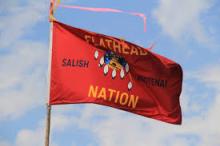
Fast, affordable Internet access for all.

Last week we published a new case study report on four Native Nations (the Coeur d’Alene, the Nez Perce, the Fond du Lac Band of Ojibwe, and the St. Regis Mohawk) who set out to build their own broadband networks after being left behind for decades by Internet Service Providers (ISPs) in the region. At the same time, we launched a new resource documenting existing Native Nations Networks with some key resources for others in Indian Country considering their own.
Read more from report author H. Trostle in a recent article in High Country News about the goals of the study, the connectivity challenges for tribes, the importance of Spectrum Sovereignty in getting those communities connected, and the creativity and persistence it has taken to get these networks off the ground so that those communities have opportunities to live, learn, and work online.
Two recent pieces from American Public Media’s Marketplace Tech add welcome additional emphasis on the importance of these issues. The first, published Monday, profiles the progress made in building a wireless network by the Confederated Salish and Kootenai Tribes on the Flathead Indian Reservation in Northwest Montana, bringing broadband to 1,300 square miles in the region, and one of the first success stories to come out in part as a result of the FCC’s 2.5 GHz Rural Tribal Priority Window last year.
The second, an interview with Matthew Rantanen, Director of Technology at the Southern California Tribal Chairmen’s Association, highlights just how big the need is for connectivity solutions for Indian Country. With Molly Wood, he discusses the possibilities offered by the new administration and the potential impact of the $1 billion in funds in the current version of the Coronavirus Response and Relief Supplemental Appropriations Act, 2021 to foster broadband access, adoption, and digital literacy efforts in tribal lands.
Thanks to the Internet Society for sponsoring this vital work, and for their past and continued efforts in pursuit of a more open, secure, universally available and affordable Internet for everyone.
